The Calash
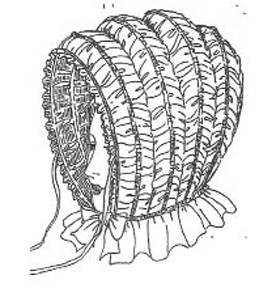
The latest fashion is often hard to understand, but that doesn’t take away from its appeal. During the American Revolution English ladies often copied the French styles in caps – the little white caps that adorn their heads, as well as keeping their hair clean.
Although the average housewife, maid, or spinster usually modified the high fashion of the day, there are few surviving journals that tell us just how they handled their coiffures. By the 1770s fashionable ladies’ hair styles could be high, low, or short and very bushy. A common thought upmost in the mind of these ladies was how to protect the elaborate hair arrangement when out and about. The Calash was just the accessory needed. One reference stated that the inspiration for the design came from a carriage of the same name. The design was based on the folding cover, use to protect occupants from the weather. Among the writers of historical fashion credit is often given to the Duchess of Bedford (England) for introducing the calash in 1765.
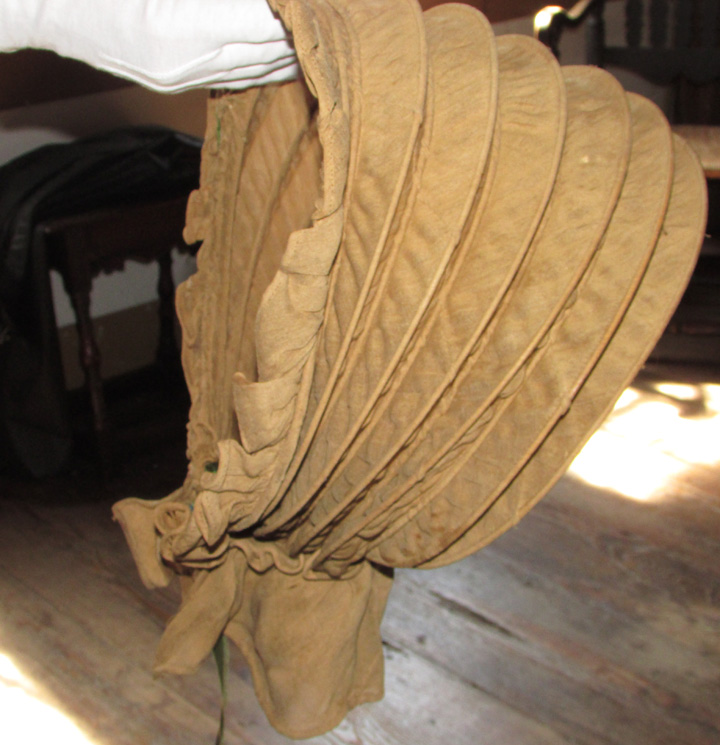
Pictured here is a fine example of a late 18th Century Calash in the textile collections of the Chapman-Hall House. The ruffles around the front hood edge and the wide neck ruffle extending around the entire lower edge are very typical of these pieces. Calashes were often made of silk, sometimes fine linen; green was a popular color. The Chapman-Hall piece may have been a shade of green originally as hinted to by the color of the ribbons still attached – the fabric is linen. The shape is held by wooden reed or whalebone pieces sewn into channels in the fabric.
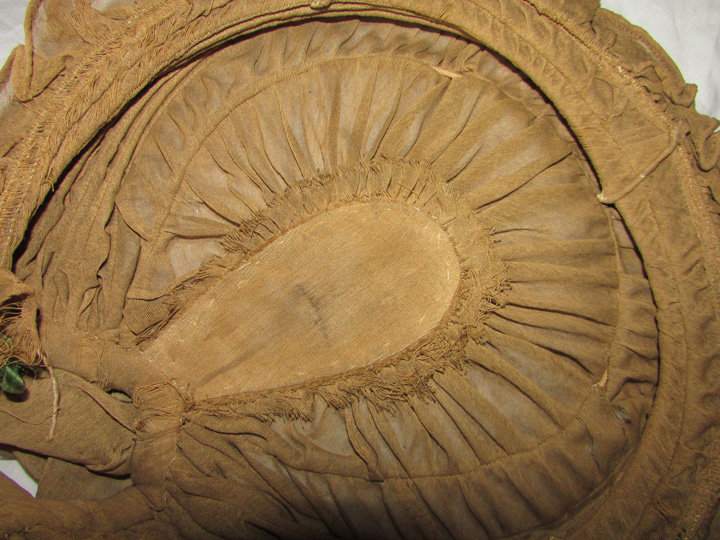
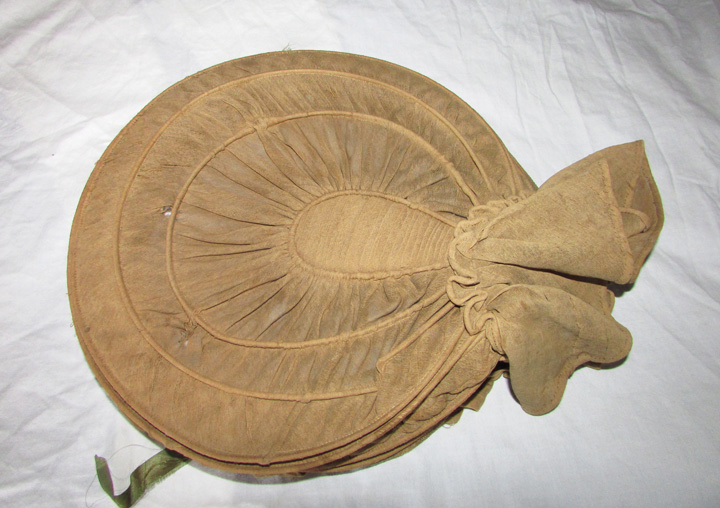
The placement of the reeds and stitching is very exacting work. Calashes were often decorated with ribbons. Commonly attached to the top of the calash were one or two ribbons that assisted the lady in keeping the calash upright over her head. By holding the ribbon(s) in her hand she could lift the hood up into position and keep it up.
Fashion dictates the style and accessories rise to the occasion.
Louise Miller, LCHA Education Director
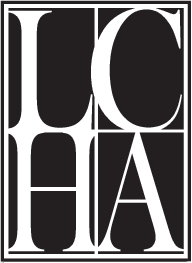
 Newsletter
Newsletter Join LCHA
Join LCHA Donate Now
Donate Now